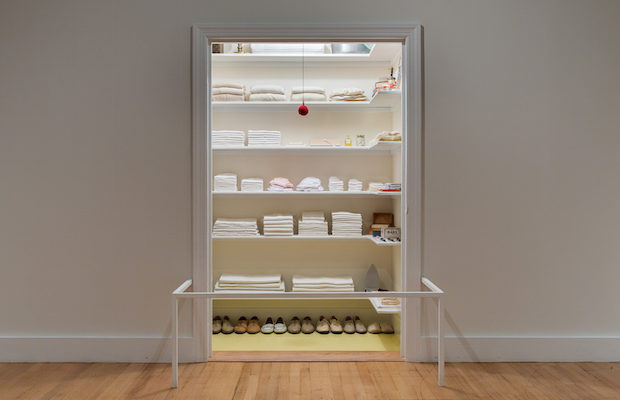 Sara Berman’s Closet. © The Metropolitan Museum of Art, New York.
Sara Berman’s Closet. © The Metropolitan Museum of Art, New York.
Exhibition
Sarah Berman’s Closet
A closet is usually considered a private space where you store and make order of the things of daily life, but Sara Berman’s Closet at the Metropolitan Museum of Art, is an ephemeral Taj Mahal, honoring the memory of a free spirit who was born in Belarus, emigrated to British Mandate Palestine and then to the Bronx, and died in 2004 at the age of eighty-four in New York City. The installation was created by Berman’s daughter, the artist and writer Maira Kalman, and her grandson, Alex Kalman, the co-founder of Mmuseumm, where it was initially shown. It replicates the idiosyncratic closet Sarah Berman kept in the modest Greenwich Village studio she moved to in 1980, after she had been married for thirty-eight years and then suddenly divorced. The apartment on Horatio Street was the place where she finally felt at home, where she had a room of her own and, enigmatically, where she began to dress almost entirely in meticulously starched and ironed white clothes. A photo of Berman from this period shows her broad-shouldered and self-assured, wearing a white suit, a white trench coat, and man’s dark tie. According to Maira Kalman, “Everything she did had an imperative reason.”
What was it about the color white? Why did she love starched linens? Kalman speculates these things were carried forward from her mother’s childhood in Belarus and youth in Tel Aviv—something about women stubbornly scrubbing their children clean in the middle of marshes and forest or, later, washing and ironing in the blinding heat of the Mediterranean. Part of the pleasure of Berman’s closet is that it respects those secrets. Her closet was never intended for public view. Rather, it was a humble, carved-out space, free from disturbance, a place for accepting uncertainty, where she was able to pick and choose what she liked, where she could arrange, discard, notice, digress, and look closely at whatever she found interesting with complete autonomy. If she organized and folded the rows of her beloved objects with “militaristic precision,” as her grandson puts it, perhaps that’s exactly what you need to do when you’re three-quarters through a complicated life and you’re a poet of intimacy.
When you look into the closet at the piles of sweaters, nightshirts, underpants, socks, and linens, all in reduced palette—ivory, pearl, pale corn, and pastel pink for one foundation bra and pastel lavender for another—and arranged sequentially in various heights and widths, you might think of Edmund de Waal’s minimalist cabinets with porcelain vessels positioned into what seem to be familial groups. The smallest deviations from perfection are reminders of the human touch. In a way, Berman was a fabric artist, creating abstract patterns with soft stacks of clothes, using an entirely different medium to explore human individuality. Then, by adding domestic objects along the closet shelves—a waffle patterned blanket is set beside a candlestick, letters from a sister in Israel are stacked beside the notebook where she kept knitting patterns for the sweaters she made for her daughter’s dog Pete—she also constructed an autobiographical collage. As a curator and artist of salvaged objects, Berman understood the tensions of randomness pulling against order and harmony, and the paradox that a whole universe can exist in a microcosm.

Sara Berman’s Closet. © The Metropolitan Museum of Art, New York.












